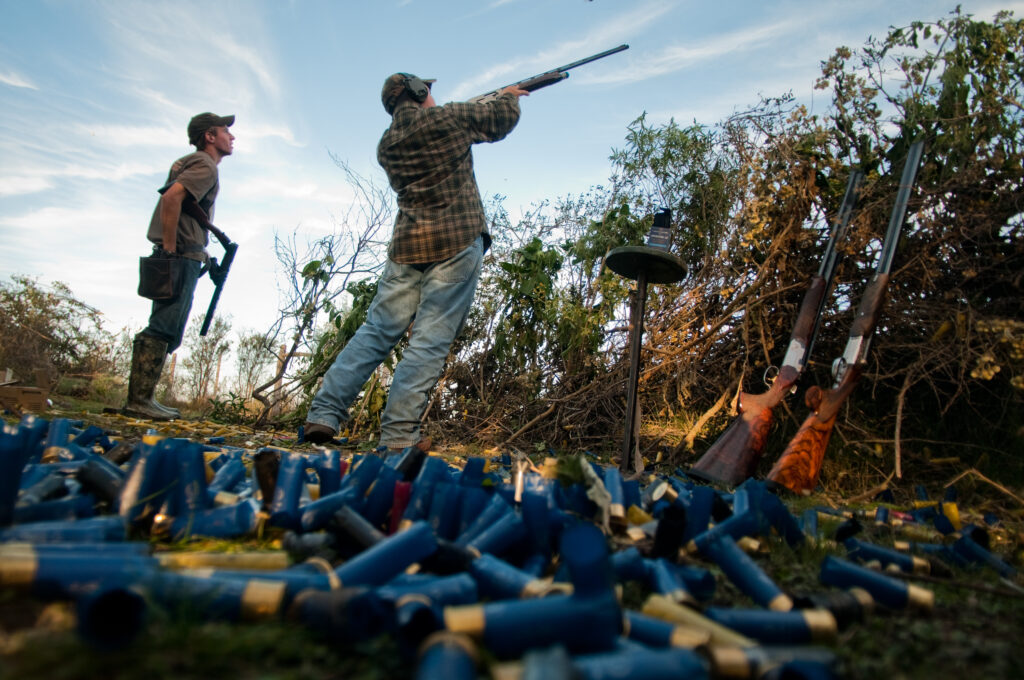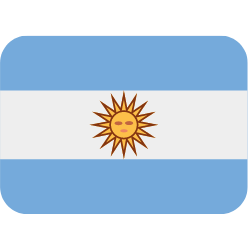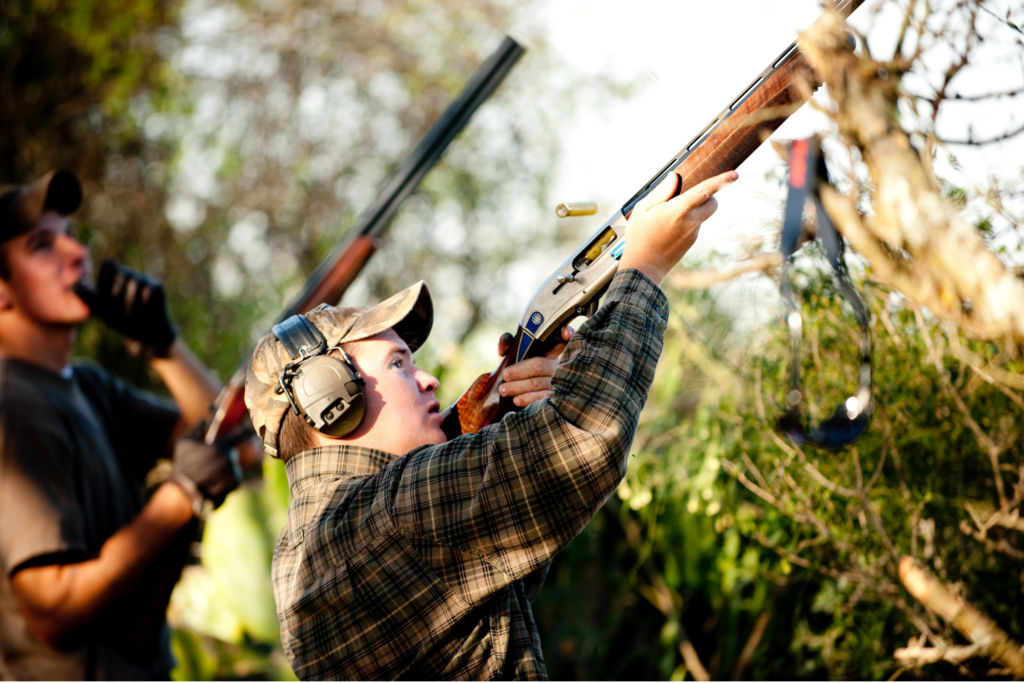The History of Dove Hunting in Argentina
A Brief History of the Dove in Argentina
In Argentina, there are tens of millions of doves or “Palomas”. The hunting of doves in Argentina has a long history that began over 30 years ago. Hunting in Argentina began with doves and has since evolved to include larger game hunting, such as deer, boar, and goat. Over the past few decades Argentina has relaxed its hunting policies, especially relating to hunters coming in from outside of Argentina, as a way to help reduce the dove population in the country. Doves are considered a problem species in Argentina due to the fact that they consume an estimated 30% of the local farmer’s seeds and grains. Additionally, the dove population does not migrate out of Argentina, it only populates, which leads to the excessive number of doves in the country. Historically, farmers would place poison around their farms to kill doves, however this resulted in killing other birds and mammals as well as introducing poison into the farming fields. Current farming practices in Argentina are staggered. This means that farmers stagger when they sow crops so that they have plenty of time over the year to harvest the crops. This practice provides doves with not only an ample amount of food, but year round food sources. Hunting has become a more efficient way of reducing the dove population in Argentina, as well as a way to bring visitors and fellow hunters into the country. While dove hunting cannot be considered an official industry in Argentina, there are an abundance of lodges and infrastructures in place to support the tens of thousands of hunters each year that participate in dove hunting in Argentina.
Facts about the Dove in Argentina
- Doves usually make their nests out of sticks, and their eggs are incubated by both the male and the female parent.
- Doves feed on seeds, fruit, and plants. Unlike most other birds, they produce a type of milk. It is produced in their crop and is called crop milk. Both males and females have this highly nutritious milk and are able to feed their young.
- While some may see dove hunting, and hunting in general as inhumane, dove hunters are actually helping to safely reduce the dove populations and conserve the land in Argentina.
- Doves flight patterns change based on which grain fields offer prime feeding opportunities.
- Quality outfitters know to place hunters between the dove’s roost and their feeding area. In the morning, hunters are able to target birds heading out to feed and in the afternoon, they are able to target doves returning to the roost.
- Argentina offers massive tracts of land that are designated specifically for dove hunters.
- A dove hunter in Argentina will often fire off an average of 1000 rounds in a single day.
- The bird that made dove hunting popular to begin with is the “Mourning dove”, which is found in North America. The type of dove hunted in Argentina is the “eared dove “or “Golden eared dove”.
- Doves’ genetics have adapted over time. Mourning dove, the species of dive found in the United States, typically breed once a year with 1 egg per hatch. The Golden eared dove, which are found and hunted in Argentina, may reproduce up to 6 times a year with a hatch of up to 2-3 eggs. These eggs typically hatch in 12-14 days.
- Doves have a lifespan of over 4 years and younger doves are able to start reproducing at about 45-50 days old.
Where to Hunt the Dove in Argentina
Doves live year round in the warmer areas of Argentina due to the ideal climate, soil conditions, roosting areas and farming practices. Doves tend to roost in areas that larger predators, such as eagles, hawks, and other large mammals, cannot get to. These roosting areas are typically several hundred or even thousands of acres large and can contain up to millions of trees. These trees have extremely sharp thorns on them which protect dove roosts from predators at all angles. With the abundance of food sources, pleasant climate, and the lack of predators, doves have no need to migrate out of Argentina. The period of time that other species of birds would typically use to migrate, doves in Argentina are able to use towards reproduction.
Cordoba is specifically known for being one of the most amazing places for dove hunting in Argentina. Córdoba in central Argentina, in the foothills of the Sierras Chicas, and is about 700 km northwest of Buenos Aires. With an estimated 30 million doves in Cordoba there is no daily limit on how much dove you can hunt. Additionally, with the moderate climate, hunting is year round and there are rarely any types of extreme weather that impact hunting.

How to Hunt the Dove
“High volume” has become a commonly used term to describe the dove hunting in Argentina. Millions of doves inhabit the area and tens of thousands of hunters visit annually. Each hunter shoots about 1000 shells per day on average. The key to effectively hunting doves is paying attention to wing shooting fundamentals, not over thinking, and trusting your gut. With the flat terrain in Argentina, dove can be visible from a distance of over 400 meters. If you shoulder your gun too early, it can make it difficult to track the fast-moving birds. Experienced shooters will single out an individual bird in the group and follow it until it comes within shooting range. Then, they will bring up the gun as they track the target dove, and as the muzzle swings past a bird, they shoot. If you do not hit the dove on the first shot, a quick follow up shot will typically do the trick. If you are able to hit a dove on your first shot, you usually have enough time to switch over to a second individual bird within the group. Since birds fly in such tight groups, it is not uncommon to hit two doves with one shot (per the phrase hitting two birds with one stone).
While doves are not considered to be skittish, they do tend to fly at higher distances when they become aware of movement on the ground. Doves can be hard enough to hit when they are unaware of hunters, so they are especially challenging to hit when they are aware of danger and are performing evasive maneuvers. It is recommended that hunters wear camouflage clothing in order to blend into their surroundings and improve their changing of catching doves off guard. Additionally, standing behind cover or in grassy, bush areas give hunters a better chance of hitting lower flying birds.
How to Get Your Trophy Home
Argentina is seventh in the world for exporting hunting trophies. It is very common for hunters to keep or mount their larger game hunting trophies. However, due to the excessive population of dove in Argentina, combined with the unlimited bags hunters are able to fill, it is less common for hunters to keep dove that they have hunted as trophies. Additionally, dove are much smaller, so they are not quite as prized as larger game. Larger animals such as Red Stag are typically taxidermized and hunters have them shipped back to the US (or wherever their home countries may be) as trophies.
Faq's
How to Book a Hunting Trip to Argentina Featuring Doves?
With Argentina being one of the top countries in the world for hunting, there are many great outfitters that operate out of fine lodges and camps. Argentina also has a good infrastructure set up of excellent roads and internal flights. Outfitters such as South American Adventure Safari offers a wide range of different packages to help you plan your wonderful trip across Argentina. Many of these packages are aimed toward hunting dove and pigeon. South American Adventure packages that feature dove include:
- Dove Shooting Entre Rios, Argentina
- Mix Bag Bird Hunting & Fishing Entre Rios, Argentina
- Cast & Blast Entre Rios, Argentina
South American Adventure Safari is the only outfitter in Argentina invited to participate in the Craig Boddington Endorsed Outfitter Program. South American Adventures Safaris was founded in 1988 by father and son José & Marcelo Sodiro. It is one of the first established hunting companies in Argentina and other countries like Paraguay, Bolivia, Ecuador and Peru. Contact South American Adventure Safari today to book your hunting trip to Argentina featuring dove hunting!
Dove Shooting, Argentina
Season: March – July

- 6 Nigths and 5 Hunting Days
- One free range Red Stag trophy (no limit on score)
- Full board lodging – Open Bar
- One-on-one guiding
Entre Rios, Argentina
Season: March – July

- 6 Nigths and 5 Hunting Days
- One free range Red Stag trophy (no limit on score)
- Full board lodging – Open Bar
- One-on-one guiding
Entre Rios, Argentina
Season: March – July

- 6 Nigths and 5 Hunting Days
- One free range Red Stag trophy (no limit on score)
- Full board lodging – Open Bar
- One-on-one guiding




